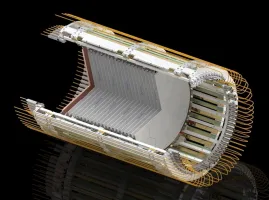Blog Credit: Trupti Thakur
Image Courtesy: Google
Dagger- The Computer AI Model
Space weather, or the effects of solar activity on Earth’s magnetic environment, can have mild to severe impacts on various technologies and infrastructures, from power grids and communication systems to GPS navigation and satellite operations. That’s why NASA researchers have developed a new computer model, called the Deep Learning Geomagnetic Perturbation (DAGGER) model, which integrates artificial intelligence (AI) with satellite data to forecast geomagnetic disturbances and provide a warning for impending solar storms.
DAGGER (Dataset Aggregation for Learning to Guide Robotically) is an AI-based computer model primarily used in the field of robotics. It is specifically designed to improve the performance of robotic systems through a process of iterative learning. DAGGER involves training a robot using human demonstrations and then refining its behavior by aggregating new data generated by the robot itself. This approach allows the robot to learn from both human guidance and its own experiences, making it particularly effective in tasks that require complex, real-world interactions, such as autonomous navigation and manipulation.
Solar Wind and the Peak of the Sun’s Activity Cycle
The continuous stream of charged particles, or plasma, emanating from the Sun is known as the solar wind. This solar wind, along with other solar phenomena, affects the Earth’s magnetosphere and can lead to geomagnetic disturbances. The peak of the Sun’s 11-year activity cycle, known as the solar maximum, is characterized by increased solar wind and other space weather events, which can pose a significant threat to modern technology.
DAGGER Model – An Overview
The DAGGER model, which was developed by a team of NASA researchers led by Vishal Upendran, uses AI to analyze and examine data from spacecraft observations of the solar wind. The model provides a lead time of 30 minutes for an impending solar storm anywhere on Earth, giving enough time for critical systems to be shut down or protected. The potential of this model was assessed using data from two geomagnetic storms that occurred in August 2011 and March 2015.
The Disruptive Effects of Geomagnetic Storms
Geomagnetic storms can have mild to severe effects on the Earth’s magnetosphere, and consequently, on modern technology. As technology is increasingly used in our everyday lives, the effects of these storms can become even more disruptive. Solar storms can lead to power outages, damage to satellites and communication systems, and even endanger the lives of astronauts on space missions.
Preventing Devastation with Rapid and Accurate Predictions
Rapid and accurate predictions of geomagnetic disturbances using the DAGGER model can help minimize or even prevent the devastation caused by solar storms. One day, solar storm sirens may sound an alarm at power plants and satellite control centers all over the world, warning of an impending storm and giving critical systems enough time to prepare.
Blog By: Trupti Thakur

21
FebDagger- The AI Based Computer Model
Feb 21, 2024Recent Blog
India’s Steps Into 6GMay 15, 2025
The New Accessibility Feature of AppleMay 14, 2025
The Digital Threat Report 2024May 13, 2025
The MADMAX ExperimentMay 12, 2025
The EntraID Data ProtectionMay 10, 2025




